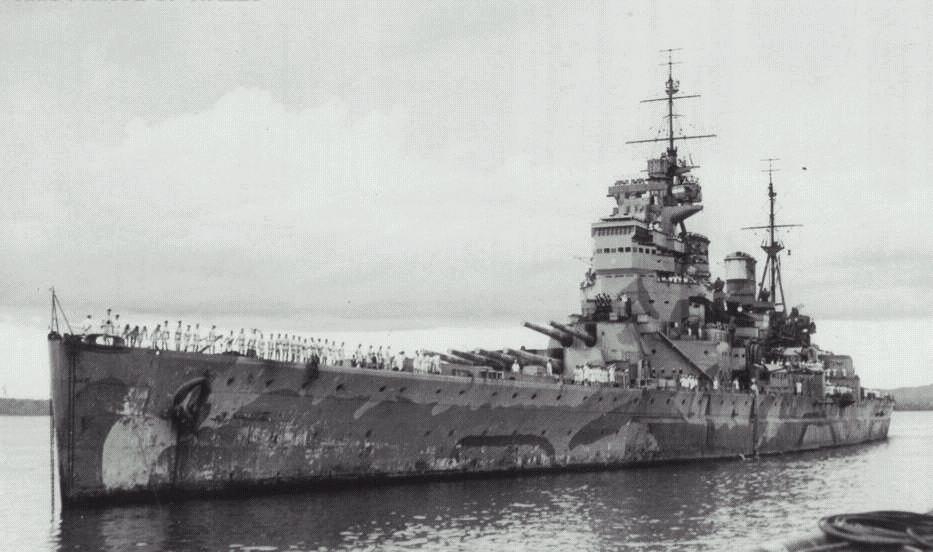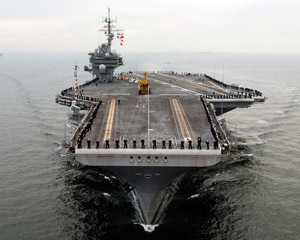企業戦略 2021.03.12
CS21 主役の交替 The changing of the leading role
For those who prefer to read this column in English, the Japanese text is followed by a British English translation, so please scroll down to the bottom of the Japanese text.
いまから77年前、日本海軍が真珠湾に奇襲攻撃をおこない太平洋戦争が開戦した。その2日後、1941(昭和16)年12月10日まで、世界の海軍は「戦闘行動中の戦艦を航空機だけの攻撃で沈没させるのは不可能」と考えていた。
しかし、この日起きた、日英の「マレー沖海戦」では、英国のチャーチル首相でさえ「不沈艦」と呼び、英国の第一王位継承者、皇太子の称号を冠した、最新鋭戦艦「プリンス・オブ・ウエールズ」、巡洋戦艦「レバルス」、この2隻の主力艦が「航空攻撃だけで沈められた」という、世界戦史上初の出来事が起きた。
ただ、この緒戦は、太平洋戦争末期の凄惨な戦場とは少し様相を異にしていた。沈没した「プリンス・オブ・ウエールズ」、「レバルス」が率いていた3隻の駆逐艦、彼らが救助に向かうと「救助がスムーズにおこなわれるよう」に、日本軍は「その後の攻撃は一切止め、救助作業おこなう駆逐艦を攻撃せず、救助作業を妨害しなかった」のである。
それどころか、手を振ったり、親指を立てて「しっかり頼むぞ」という仕草を送ったのである。更に救助活動後にこの駆逐艦がシンガポールに帰港する際にも、日本軍の飛行機は上空から視認はしていたが一切攻撃はしなかった。「武士道」のなせる技である。
「武士道」で言う「武士の情け」とも言えよう。この「情け」という言の響きで誤解を生むことが多いが、この言葉は、「私たちが絶対に失ってはいけない相手に対しての節度」を示す言葉である。「武士は主君を持ち、その命を忠実にこなすことが生き様であり、そんな中で相手を辱めることなく遂行しつつ相手に最大限の配慮をする」ということである。
既に「戦いの継続ができない相手」に対しては、その状況に鑑みて、「また再起の機会を与える」ということである。「毒ガス攻撃」が戦争に於いても禁じられているなか、戦争末期、「市民への無差別爆撃」や「原子爆弾」を使った攻撃は、「戦争」という究極の国と国との「交渉の最終手段」としても、「そういう行為は、戦争でも許されない、人としての行いではない」ということをこの事実は教えているのではないだろうか。
また、その後プリンス・オブ・ウェールズを撃沈した航空隊は、現場を訪れ、英国海軍将兵の戦いぶりに敬意を表し、また戦死した日英両国の兵士に哀悼と鎮魂のために、2本の花束を投下した。「騎士道」に敬意を表した「武士道」のなせる技であろう。騎士道、武士道という、「人間が生きるための精神的主柱とも言える『道』が無い国にはできないこと」であろう。
そして、これ以降、戦艦は航空機の攻撃の前には脆弱だと認識され、各国の海軍では航空戦力の充実を図っていくようになり、太平洋戦争の海戦の主役は戦艦ではなく空母機動部隊にその座が移っていった。
特に米国海軍では、その変化は顕著であった。太平洋戦争前の米国海軍は、戦艦中心主義だったが、「真珠湾攻撃」、またこの「マレー沖海戦」で、航空戦力が攻撃の中心的役割を果たし、その威力が示されたことから、「戦艦中心主義」を「航空母艦(空母)中心主義」に大転換、それが現在でも受け継がれている。現在の米国の海軍の編成は、「軍備の単位」は空母を中心に組まれ、「空母打撃軍」という単位で軍備編成が決められているのである。この空母打撃群(CSG: Carrier Strike Group)とは、「1隻の航空母艦とその艦上機、複数の護衛艦艇によって構成されているユニット」のことである。
しかし、その米海軍の空母中心主義も、いま新たな海軍戦略へ抜本的な転換が迫られている。その理由は、産業構造の変化によって、海軍工廠と民間の造船所を合わせても、米国内での造艦、メンテナンス能力が不足しているため、航空母艦が「動けず」に稼働率が劇的に低下しているという理由を背景にしているが、より本質的には「空母を必要としない航空戦力の急速な技術の進化」のためである。戦争の「主役の交替」が起きているのである。

シンガポールに到着したプリンス・オブ・ウエールズ
The Royal Navy battleship HMS Prince of Wales coming in to moor at Singapore
1.机上演習
本コラム、「企業戦略(CS)10-『内閣総力戦研究所』」に「昭和16年夏の敗戦」(猪瀬直樹著 中公文庫刊)から下記を引用した。
1940年(昭和15年)10月、国家総力戦に関する調査研究をおこなう内閣総理大臣直轄の新たな組織、総力戦研究所が誕生、翌41年4月、各官庁、軍、民間から選抜された若きエリート達35名が第一期生として入所した。7月、日米戦争を想定した第1回総力戦机上演習計画が発表され、演習用の模擬内閣も組織された。
「閣僚」となった研究生達は、軍事、外交、経済等について、各種データを分析、戦争の展開を予測した。結果は、「開戦後、緒戦の勝利は見込まれるが、その後の推移は長期戦必至であり、その負担に国力は耐えられない。終末期にはソ連の参戦もあり、敗北は避けられない。ゆえに戦争は不可能」と「日本必敗」という、現実の戦局推移とほぼ合致する結論を導き出した。
この机上演習の研究結果と講評は、1941(昭和16)年8月27、28日両日に首相官邸で開催された、「第一回総力戦机上演習総合研究会」において、当時の近衛文麿首相や東條英機陸相以下、政府、軍関係者の前で報告された。
研究会の最後に東條陸相は、「諸君の研究の労を多とするが、これはあくまでも机上の演習でありまして、実際の戦争というものは、君達が考えているようなものでは無いのであります。日露戦争で、わが大日本帝国は勝てるとは思わなかった。しかし勝ったのであります」と述べた。
しかし、間違っていたのは後の総理大臣、豊富な戦いの経験を有する東條陸相であり、戦いを知らない平均年齢33歳の若者達の予測の方が見事に的中したのである。机上演習(シミュレーション)をねじ曲げた結果が「4年後の敗戦」であった。これと同じ事が米国で起きた。
2.米軍の机上演習
米軍は、2002年、莫大な予算を投入して大規模な机上演習「Millennium Challenge 2002(MC-2002)」をおこなった。軍やシンクタンクが、戦略、戦術等を研究するため、敵、味方に別れて詳細なデータに基づきコンピューターを使って実施する軍事演習である。
この時、「仮想敵」と米軍は2週間にわたって机上戦闘をおこなうことになっていたが、海兵隊の退役中将が率いた「仮想敵」は、小型艦艇などを駆使した見事な作戦を成功させ、開戦2日目で、米軍の原子力空母、強襲揚陸艦、全て16隻の米軍艦を撃沈、米軍の戦死者は2万人と計算された。この結果に慌てた米軍首脳部はこの机上演習を中止させ、仮想敵が用いた戦術の多くは「禁止され」て、結果米軍が勝利する結果となったのである。
航空母艦は非常に高価な武器である。米国の外交専門誌「The National Interest」によると、2008年に建造された最新鋭空母「ジェラルド・R・フォード級航空母艦」クラスで、その建造費用は約133億ドル(1兆4千億円)と見積もられている。更に、空母には戦闘機、早期警戒機、小型輸送機、ヘリコプター等、様々な航空機が搭載されるため、造船業界のみならず、航空機産業も潤う、経済効果の裾野の広い「商品」であるため、「航空母艦を中心にした戦闘編成」が求められる側面もある。
しかし、海上を警戒監視するための軍事衛星等の技術が飛躍的に進歩を見せているため、近年の軍事航空機に重要視される「ステルス性」を海軍の艦船が持つことはもはやできない。さらに、中国やロシアが各種対艦ミサイルの性能を飛躍的に向上させていることも、一般紙にさえその関連の記事が掲載されるほど周知の事実となっていることもある。
こういった動きに対抗するため、日本の海上自衛隊でも導入されている「イージス艦」を中心に据えて、「空母部隊を敵のミサイル攻撃や爆撃から防衛する防空戦闘システム」である「イージスシステム」の改良を続け、あくまでも航空母艦を中心にした戦闘編成「空母打撃群」を軍備編成の単位として維持しようとしているが、いずれ大きな変化の波が起こることは必定であろう。
その理由としては、海上艦艇に搭載できる「防空ミサイル」の数には限りがあるため、大量の対艦ミサイルが撃ちこまれた場合、対応できないという明確な事実が存在するからである。「レーザー兵器の早期の開発、配備」が可能にならない限り、「空母中心」の戦闘隊形は近未来的には終焉を迎えるであろう。

3.家庭電化製品分野
軍事以外、このところさまざまなエレクトロニクス分野において、急速な技術革新に後押しされた「主役の交代」が起きている。ビデオレコーダーの分野では、VTR からDVDへ、さらにハードディスクへと変化、携帯音楽プレーヤーでも、一時代を築いた「Walkman」に代表されるカセットテープ・プレーヤーから、MD、ハードディスク、フラッシュメモリとめまぐるしく変化している。ディスプレイの分野では、温度特性、寿命等多くの問題点が指摘されていた液晶であったが、めざましい技術革新によって、2005 年、国内液晶テレビの年間出荷台数が初めてブラウン管テレビを抜いた。そして、今では液晶から有機ELがその主役の座を奪いつつある。
戦後、数々のユニークな商品を市場に提供して大きく成長した企業が中心となって、日本の高度経済成長を牽引してきたが、経済の急速なグローバル化、新興国の台頭といった社会変革のなかで、日本企業はその存在感を低下させつつある。「日本のお家芸」とも言われた家電の分野に於いても、グループ10万人超の巨大企業が倒産を経ずに、経営統合で事実上消滅するという、日本の経済史でも初めてとなるようなことが起き、また、創業100年を超える大手電機メーカーが外資の傘下となるなど、往時の勢いは全くない状況になっている。
「日本企業は、なぜかつての輝きを失った」のか。本コラムで様々な事例を挙げて具に記してきたが、「欧米企業と日本企業の差を挙げろ」と問われたら、「過去の成功体験をどう扱うかに関して大きな違いがある」と答えるが、それがこの問いに対する答えでもあろう。「成功体験をただ踏襲するのか、それともそれを乗り越えてイノベーションしていくのか」である。家電業界に見られるように、日本企業の多くはこの「成功体験を忘れられておらず、企業戦略に進化が見られていない」と感じることが多い。
「リスクマネジメントの根本は『思い込み』を排することである」と繰り返し記してきたが、多くの日本企業は、技術的な優位性があればビジネスでも優位に立てるという「思い込み」から、同じ失敗を繰り返しているのではないだろうか。自ら、開発した技術が、そのまま製品の付加価値として、つくった製品も売れに売れた、1970年代、80年代の成功体験が忘れられないからであろう。
言い換えると、「経営課題を全て技術の問題として解決しようとしてきた」というところに行きつく。技術は優れているのに世界的な競争に勝てないケースが目に付く。その差は、「企業戦略」という言葉のなかにある「戦略」という言葉の意味が理解されず、「計画」と同義になっているところにあるのではないだろうか。単なる「計画」と違い、企業戦略は「企業の事業活動の根幹=背骨」である。全責任を担うトップが決め、「トップダウン」で企業の末端まで徹底されたとき、その威力を遺憾なく発揮するものだからである。

4.企業戦略に変革を迫るコロナ禍
昨年から今年にかけて、日本が、世界が大きく変わりつつある。新型コロナのパンデミックの影響である。ビジネスの世界でもそれが顕著に現われているのが「面談を伴う対面のビジネスモデル」である。
特にその影響を強く受けているのが生命保険営業であると聞く。営業の基本が「訪問販売」であるからである。昔、個人宅の訪問、また企業訪問もある意味「自由にできた」ために産まれた「訪問販売というビジネスモデルの基本原則」が、一戸建てでは「インターフォン」の普及、マンション・アパートでは、「オートロック」の普及、このようなことで家庭への直接の訪問販売が困難になってきた。企業への訪問も、「セキュリティ対策」ということで、会社のなかに昔のように入っていくことはできなくなっている。その上に起きたのが、コロナ禍である。
生命保険主要生保14社の2020年上半期(4~9月期)の新規契約の保険料収入(新契約年換算保険料)は、前年同期に対して40%以上減の約5000億円と各種メディアで報道された。有効なワクチン接種が行き渡り、そしてコロナ禍が過ぎ去ったとしても、時代の変化に応じてビジネスモデルも変化しなければならない。そうでなければ「負け組産業」となる危険性があるのではないだろうか。
戦後、原油価格が低下したが外貨不足であった日本は、外国から無制限に石油を買うことができないため、政府の保護のもと発展してきた石炭産業は、「国産石炭優先の政策はその後も続く」と考えていた。採掘技術や運送方法などの改善には努力したが、業種業態の変化までも見据えた企業戦略の転換をすることはなかった、環境に過剰に適応して「それしかない」と新たな取り組みもしなかったからである。
コロナ禍によって、「産業革命」と呼べる程大きな環境変化に曝されたいま、企業はどう対応するのか。欧米の企業のように業態の変化まで踏み込んで企業戦略の変更をおこない企業改革を断行するのか。それとも、「時代はまた戻る」とこれまでと同じ途をそのまま歩み続けるのか、経営の質が問われているのが今である。
今回のまとめ
最近、ある大手生保の役員とオンラインで話をする機会があった。その時、彼は「生保は営業することで売れる商品。今後も対面での営業が主流、その時代に戻る。」と強調していた。また、こういう声が生保のなかでは根強いと聞く。
「大きな変化を嫌う、自分の足下が崩れ去るように思い、それに抗いたい気持ち」は痛いように分るが、「果たして、そうであろうか」と筆者は思う。単純なネット販売への参入にとどまらない、コロナ禍への対応という単純な視点からではなく、「将来のあるべき姿」に適応するために企業戦略の抜本的な変革の巧拙が、今後の生保各社の競争力を左右する時代になっているのは、明白だからである。
これは何も生命保険業界のことばかりではない。「対面販売」は歴史始まって以来「販売活動における最重要なファクター」であった。つまり、全産業が「企業戦略の大幅な見直し」をする必要性に迫られているということである。こういうことにきづかず「従来通りの企業戦略を続けて行く」ことの結果を冒頭の太平洋戦争の事例は教えてくれているのではないだろうか。
全企業で、企業戦略の核であるリスクマネジメントをおこなわなければならない状況であると考えられるが、そのような話を仄聞することは無い。一方、英国、ドイツ、米国の業務提携先とのオンライン会議では、「多くの企業がリスクマネジメントの作業に余念が無く、保険プログラムも抜本的な変革を求められていて大変だ」との話を聞く事が多い。
コロナ禍によって、「今日は昨日の続きではない、また明日も今日の続きではない」ということを嫌と言うほど思い知らされている日本企業が多いと思われるが、「リスクマネジメント態勢の抜本的な変更、構築をしている」ということを驚くことに聞いたことはない。いまこそ、キャプティブの設立を視野に入れた「本格的なリスクマネジメント」に取り組み、企業戦略の大幅な見直しにも勇気を持って取り組んでいく時ではないだろうか。
執筆・翻訳者:羽谷 信一郎
English Translation
Corporate Strategy 21 – The changing of the leading role
Seventy-seven years ago, the Japanese Navy launched a surprise attack on Pearl Harbor to start the war in the Pacific. Until two days later, on 10 December 1941, the world’s navies believed that it would be impossible to sink a battleship in action using only aircraft.
However, on this day, in the Battle of Malaya between Japan and Britain, even the British Prime Minister Churchill called it “unsinkable” and named it after the first heir to the British throne, the Prince of Wales, the cutting-edge battleship “HMS Prince of Wales”, and the cruiser “HMS Repulse”, the two main ships were sunk by air attack alone, the first event in the history of world warfare.
However, this first battle was a little different from the horrific battlefield at the end of the Pacific War. As the three destroyers, led by the sinking HMS Prince of Wales and Repulse, went to the rescue, the Japanese “ceased all further attacks, did not attack the destroyers engaged in the rescue, and did not interfere with the rescue operation” to “ensure that the rescue went smoothly”. On the contrary, they waved and gave a thumbs up gesture to say “Hang in there”. And when the destroyer returned to Singapore after the rescue operation, the Japanese planes saw her from the air but did not attack her in any way. It was a case of ”Bushido”.
This is what “Bushido”(Japanese chivalry)calls “the mercy of the samurai”. The word “mercy” is often misunderstood, but it means “moderation in dealing with others, which we must never lose.
A samurai has a master and his life is to be faithful to that master’s orders, and to do so without dishonouring his opponent, but with the utmost consideration for him.
For those who are already “incapable of continuing the fight”, it means to “give them another chance” in view of their situation. At the end of the war, when “poison gas attacks” were forbidden, “indiscriminate bombing of civilians” and “atomic bombs” were the ultimate means of “negotiating” between countries, but this fact teaches us that “such acts are unacceptable, even in war, and are not human”.
Afterwards, the air force that sank the HMS Prince of Wales visited the site to pay their respects to the Royal Navy officers who had fought and to drop two bouquets of flowers, one to British soldiers and the other to Japanese soldiers, as a gesture of condolence and repose for the Japanese and British soldiers who had died. It was Bushido’s way of paying homage to chivalry. This is something that cannot be done in a country that does not have chivalry and bushido, the main spiritual pillars of human life.
From this point onwards, battleships were perceived to be vulnerable to aircraft attack, and the navies of many countries began to enhance their air power, and the leading role in the naval battles of the Pacific War shifted from battleships to carrier task forces.
This change was particularly noticeable in the US Navy. Before the Pacific War, the US Navy was battleship-centric, but after the attack on Pearl Harbor and the Battle of Malaya, where air power played a central role in the attack and showed its power, there was a major shift from battleship-centricity to aircraft carrier-centricity, which has been carried on to the present day. The current US Navy is organized around the carrier as the “unit of armament”, and the armament is determined by a unit called the “Carrier Strike Group”. This Carrier Strike Group (CSG) is “a unit consisting of a single aircraft carrier, its onboard aircraft, and a number of escort vessels”.
However, the US Navy’s carrier-centric approach is now undergoing a fundamental shift towards a new naval strategy. The reason for this is that changes in the structure of industry have resulted in a lack of shipbuilding and maintenance capacity in the US, both at the naval arsenal and in civilian shipyards, and this has led to a dramatic decline in the availability of aircraft carriers. but more essentially because of the “rapid technological evolution of air power that does not require aircraft carriers”. There is a “changing of the leading role” in the war.
1. Table-top exercise
In this column, “Corporate Strategy (CS) 10: The Cabinet Institute for Total War”, I quoted the following from “The Defeat in the Summer of 1941” by Naoki Inose, published by Chuko Bunko.
In October 1940, “the Sōryoku Senryaku Kenkyū Kenkyū(Cabinet Institute for Total War)” was established as a new organization under the direct control of the Prime Minister to conduct research and studies on national total war. In April of the following year, 35 young elites from various government agencies, the military and the private sector were selected to join the first class of students, and in July the plan for the first Total War Exercise was announced and a mock cabinet was formed for the exercise.
The students, who became “ministers”, analysed a variety of military, diplomatic and economic data to predict how the war would unfold. The results were: “After the outbreak of the war, victory in the first phase of the war is expected, but the transition thereafter will inevitably be a prolonged war, and the national power will not be able to bear the burden. At the end of the war, the Soviet Union would enter the war and defeat would be inevitable. Therefore, war is impossible” and “Japan must be defeated” were the conclusions drawn, which were almost in line with the actual war situation.
The results of this study and his comments were presented to Prime Minister Fumimaro Konoe, Army Minister Hideki Tojo, and other government and military officials at the First Comprehensive Study Meeting on Total War Exercises, held at the Prime Minister’s official residence on August 27 and 28, 1941.
At the end of the meeting, Tojo said, “I appreciate the work you have done, but this is only a table-top exercise, and actual war is not what you think it is. In the Russo-Japanese War our Empire was not expected to win. But we won.”
But it was the future Prime Minister, the battle-hardened Army Minister Tojo, who was wrong, and the predictions of a group of young men, average age 33, who had never fought a battle, who were more correct. The result of twisting the simulation was the defeat four years later. The same thing happened in the US.
2. The US military’s table-top exercises
In 2002, the U.S. military conducted the Millennium Challenge 2002 (MC-2002), a large-scale table-top exercise with a huge budget. These are computer-based military exercises in which the military and think tanks use detailed data to study strategy, tactics, etc., for both friend and foe.
The “virtual enemy”, led by a retired Marine lieutenant general, used small naval vessels and other weapons in a spectacularly successful operation that sank 16 US warships, including a nuclear-powered aircraft carrier and assault landing craft, on the second day of the war. The US military death toll was calculated at 20,000. Panicked by these results, the US military leaders cancelled the exercise and many of the tactics used by the hypothetical enemy were “banned”, resulting in a US victory.
Aircraft carriers are very expensive weapons. According to the US diplomatic journal “The National Interest”, the Gerald R. Ford class of aircraft carriers, the most advanced class built in 2008, cost an estimated $13.3 billion to build. In addition, aircraft carriers are equipped with a wide range of aircraft, including fighter jets, early warning aircraft, small transport aircraft and helicopters, making them an economic product that benefits not only the shipbuilding industry but also the aircraft industry.
However, due to the dramatic advances in technology, such as military satellites to monitor the seas, it is no longer possible for naval ships to have the “stealthiness” that has become so important in recent years for military aircraft. In addition, it is now a well-known fact that China and Russia are dramatically improving the performance of their anti-ship missiles, and that even the popular press has published articles on this subject.
In order to counter these developments, the U.S. is continuing to improve the Aegis system that the Japanese Maritime Self-Defense Force has introduced, which is an air defense combat system that defends carrier units from enemy missile attacks and bombings, and is trying to maintain the carrier strike group, which is a combat formation centered on aircraft carriers, as the unit of armament organization. However, it is inevitable that a wave of major changes will occur.
The reason for this is the clear fact that the number of “air defence missiles” that can be carried on board maritime vessels is limited, so that they would not be able to cope with a large number of anti-ship missiles being fired at them. Unless “laser weapons can be developed and deployed quickly”, the “carrier-centric” battle formations will come to an end in the near future.
3. Home appliances
Apart from the military, there has recently been a “changing of the leading role” in a number of electronics sectors, driven by rapid technological innovation. In the field of video recorders, there has been a shift from VCRs to DVDs and then to hard disks, and in portable music players, from the cassette tape players of the “Walkman” era to MDs, hard disks and flash memory. In the field of displays, LCDs have long been associated with a number of problems, such as temperature characteristics and longevity, but thanks to remarkable technological innovation, annual shipments of LCD televisions in Japan overtook those of CRT televisions for the first time in 2005. OLEDs(organic EL)are now taking over the lead from LCDs.
In the post-war period, Japan’s rapid economic growth was driven by companies that brought a number of unique products to the market, but in the face of rapid economic globalisation, the rise of emerging economies and other social changes, Japanese companies are losing their presence. In the field of consumer electronics, which was once known as “Japan’s speciality”, for the first time in Japan’s economic history a giant company with more than 100,000 employees virtually disappeared through a merger without going bankrupt, and a major electronics manufacturer with more than 100 years of history became a subsidiary of a foreign company.
“Why have Japanese companies lost their former glory? ” If I were asked to name the difference between Western and Japanese companies, I would say that there is a big difference in the way they deal with their past successes, and that would be the answer to this question. The answer to this question is: “Do we simply follow our successes, or do we innovate beyond them?” Many Japanese companies, such as those in the consumer electronics industry, feel that they have not forgotten their successes and that their strategies have not evolved.
I have repeatedly written that “the root of risk management is to eliminate assumptions”, but I believe that many Japanese companies continue to make the same mistakes because they believe that technological superiority gives them an edge in business. This is probably because they cannot forget the success they had in the 1970s and 1980s, when the technology they developed directly became the added value of their products, and the products they made sold like hotcakes.
In other words, “they have been trying to solve all their business problems as technology problems.” We have seen cases where companies have superior technology but cannot compete globally. The difference may lie in the fact that the word “strategy” in the term “corporate strategy” is not understood and has become synonymous with “planning”. Unlike a mere “plan”, a corporate strategy is the “backbone of a company’s business activities”. It is only when it is decided by the top management, which takes full responsibility, and is thoroughly implemented from the top down to the very end of the company, that its power can be fully appreciated.
4. The new corona (covid-19) disaster, which is forcing a change in corporate strategy
From last year to this year, Japan and the world are undergoing major changes. This is due to the impact of the new corona (covid-19) pandemic. In the world of business, this is particularly evident in the face-to-face business model.
Life insurance sales are particularly affected by this. This is because the basis of sales is “door-to-door sales”. However, the spread of intercoms in personal residences and automatic locks in condominiums and flats has made it difficult to sell direct to the home. In addition, it is no longer possible to go into companies as in the past, because of “security measures”. On top of all this, there was the new corona(covid-19) disaster.
In addition, it is no longer possible to go into companies as in the past, because of “security measures”. On top of all this, there was the Corona disaster.
In the first half of 2020 (April-September), the 14 major life insurers reported that their annualised premium income from new policies was down more than 40% on the same period a year earlier, to around ¥500 billion, according to various media reports. Even if effective vaccinations are available and the corona scourge has passed, business models must change with the times.Otherwise, it will be a “losing industry”.
After the war, when the price of oil fell but Japan was short of foreign currency, it could not buy unlimited amounts of oil from abroad, and the coal industry, which had developed under government protection, believed that the policy of prioritising domestic coal would continue thereafter. It made efforts to improve mining techniques and transportation methods, but did not change its corporate strategy to take account of changes in the business environment.
Now that the new corona (covid-19) disaster has exposed us to a change in the environment so great that it could be called an “industrial revolution”, how will companies respond? Do they change their corporate strategies, even to the extent of changing their business models, as companies in Europe and the United States have done, and carry out corporate reforms? Or will they continue on the same path as before, believing that “the times will return”?
Summary of this issue
I recently had the opportunity to speak online with a director of a major life insurer. At the time, he said, “Life insurance is a product that can be sold through sales. Face-to-face sales will continue to be the norm and we will return to that era.” I also heard that there is a deep-rooted feeling among life insurers.
It is painfully obvious that they are reluctant to make any major changes, feeling as if they are losing their footing and wanting to resist them, but I wonder if this is the case. It is clear that the future competitiveness of life insurers will depend on their ability to make fundamental changes to their corporate strategy to adapt to the future, and not simply to enter online sales or to respond to the new corona (covid-19) disaster.
This is not just a matter for the life insurance industry. Face-to-face sales have been the most important factor in sales activity since the beginning of history. This means that the whole industry is in need of a major overhaul of its corporate strategy. The case of the Pacific War at the beginning of this article shows us the consequences of not realising this and continuing with the same corporate strategy as before.
It would seem that all companies need to implement risk management as a core part of their corporate strategy, but there is no mention of this. On the other hand, in our online meetings with business partners in the UK, Germany and the US, we often hear that many companies are working hard on risk management and that their insurance programmes are in need of radical change.
The new corona (covid-19) disaster has reminded many Japanese companies that today is not the same as yesterday and tomorrow is not the same as today, and it is surprising that we have not heard that they are making fundamental changes to their risk management systems. Now is the time for full-scale and serious risk management, including the establishment of captives, and the courage to undertake a major review of corporate strategy.
Author/translator: Shinichiro Hatani

